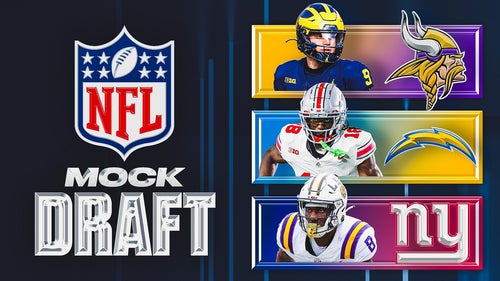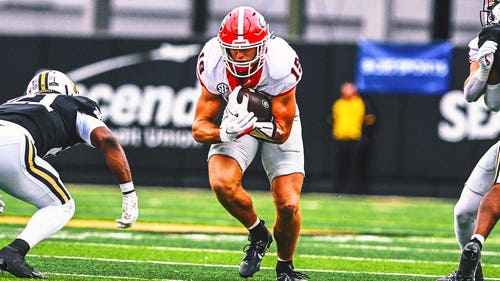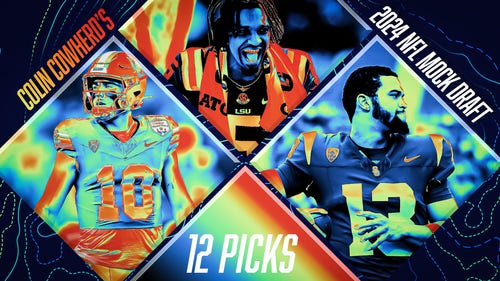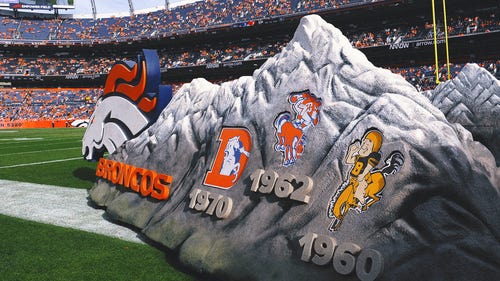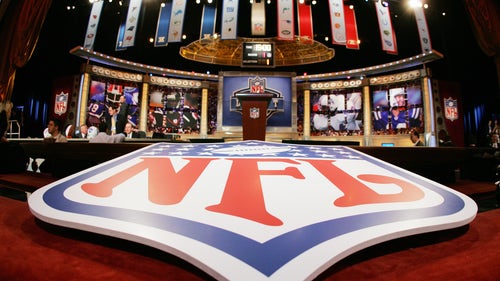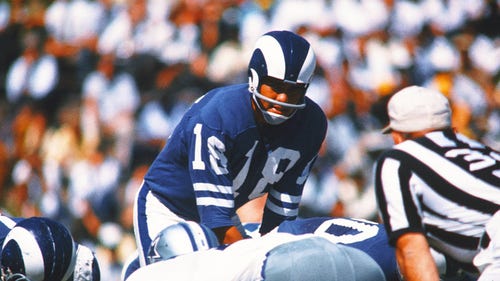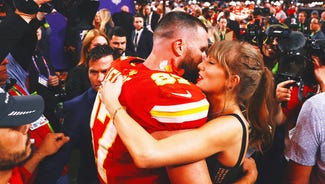
Aaron Hernandez trial begins with conflicting opening statements
The first day of the Aaron Hernandez murder trial brought competing narratives from the prosecution and the defense — the former New England Patriots star was cast alternately as a cold-blooded, calculating killer and a young man with a long-term contract, a fiancée and a new baby.
A prosecutor dropped previously unknown forensic evidence into his opening statement: that a spent bullet casing recovered from the car prosecutors allege Hernandez used in the crime was not only scientifically matched to other shells found at the murder scene, but also contained DNA that matches that of the former tight end.
And a defense attorney asked jurors to ask themselves a question: Would Hernandez, a then-23-year-old living his dream, have any reason to shoot and kill Odin Lloyd, the boyfriend of his fiancee’s sister and the man who procured the marijuana he liked to smoke?
The trial, delayed almost two hours as the judge conducted interviews with 15 new prospective jurors and ultimately replaced one of the people on the panel, has been more than 19 months in the making, ever since June 17, 2013, the day Lloyd’s bullet-riddled body was found in a secluded field less than half a mile from Hernandez’s home in North Attleboro, Mass.
Assistant District Attorney Patrick Bomberg spent every bit of the 45 minutes allotted to him — and then some — walking jurors through evidence he said would prove Hernandez is guilty of Lloyd’s murder.
DNA evidence. Footprint evidence. Tire track evidence. Cell phone tracking evidence. Text messages. Surveillance camera images. Ballistics evidence.
Every bit of it, he said, pointed to Hernandez as the person guilty of the murder of Lloyd, a semi-pro football player. The killing, he said, occurred after a dispute at a nightclub two days earlier, and included the involvement of two others in a “joint venture” and efforts to both conceal the killing and get rid of evidence.
Near the end of his presentation, Bomberg told jurors the evidence would ultimately show that Hernandez “orchestrated, participated in the killing and covered up the killing.”
Defense attorney Michael Fee presented a very different picture: one fueled by “sloppy and unprofessional” police officers.
“We are here because police and prosecutors targeted Aaron Hernandez from the very beginning,” Fee said.
He accused police of twisting facts to fit their theories, of harassing witnesses and making leaps that weren’t supported by the evidence. Hernandez, he said, considered Lloyd his friend, liked partying with him and frequently bought marijuana from him and smoked it with him. He had a long-term contract with the Patriots, a fiancée and a young daughter, Fee stressed again and again.
“In June of 2013,” Fee said, “Aaron Hernandez was planning a future, not a murder.”
Hernandez, 25, faces one count of murder and two firearms charges in the June 17, 2013, killing of Lloyd, who was gunned down in a secluded field less than a mile from the player’s home.
Lloyd, 27, was dating Shaneah Jenkins, the sister of Hernandez’s fiancée, Shayanna Jenkins.
Prosecutors have alleged that Hernandez summoned two associates from his hometown of Bristol, Conn., to his Massachusetts home late the night of June 16, 2013, and simultaneously made plans to meet with Lloyd. Hernandez then allegedly drove the other two men, Carlos Ortiz and Ernes Wallace Jr., to the Dorchester neighborhood of Boston, picked up Lloyd and returned to North Attleboro.
According to court documents, Hernandez allegedly drove into a secluded area in an industrial park that is surrounded by woods and mounds of asphalt, gravel and dirt. There, Lloyd was shot multiple times with a .45-caliber handgun that prosecutors allege was a Glock.
Although prosecutors have not said who they believe fired the fatal shots, they have asserted that Hernandez “orchestrated” the killing. Ortiz and Wallace have also been indicted on murder charges but will be tried separately. The prosecution does not plan to call either as a witness in the trial.
Opening statements are not evidence — they are the first attempt by attorneys on both sides to craft a narrative they can sell to the jury in the coming weeks.
And the two sides offered starkly different stories for the jurors to consider.
Bomberg stressed voluminous cell phone evidence that he said would show Hernandez made arrangements to pick up Lloyd at the same time he was summoning Ortiz and Wallace from Connecticut to Massachusetts. He pointed out that a marijuana cigarette found near Lloyd’s body had DNA on it that belonged to both Lloyd and Hernandez. He also said DNA matching Hernandez’s was found on a shell casing discovered in a rented Nissan Altima that prosecutors allege was used in the killing. And he said that a tire track found at the scene was matched to the Nissan and that a footprint found there was “consistent” with Hernandez’s Air Jordan shoes.
He spiced up his presentation with clips of surveillance videos, including an image of Hernandez that he said shows him holding a pistol in his home shortly after Lloyd was killed.
“You’ll hear from a representative of Glock that that appearance is unique, that that, ladies and gentlemen, is a Glock,” Bomberg said.
He told jurors that they would hear that Hernandez told friends he had nothing to do with Lloyd’s death, that he swore on the life of his young daughter that he was innocent, that when the time of the murder came out Hernandez would be able to prove he was out to dinner with his fiancée and friends.
In fact, Bomberg said, the evidence would show that Hernandez was driving a car with Lloyd in it just minutes before he was killed, and that he was back at his home a short distance away just minutes after the murder.
When Fee stepped before the jurors, he in many cases didn’t challenge the facts Bomberg had laid out, but rather, questioned their implication.
The most prosecutors could prove, he said, was that Hernandez was with Lloyd shortly before he was killed. He referred to Lloyd repeatedly as Hernandez’s “friend” or “good friend,” and he acknowledged the player had a lifestyle the jurors might not approve of: smoking pot, drinking, picking up women.
“Scrutinize the evidence,” Fee said. “Look for evidence of why Aaron would do this. Sometimes that’s called motive. What was his reason? What is the evidence of a motive? Why would he kill his friend Odin Lloyd? Odin Lloyd. Odin Lloyd who was one of his partying pals. Odin Lloyd who was his source and supplier of marijuana blunts. … Ladies and gentlemen, evidence will show there was no reason, there was no evidence. Aaron Hernandez did not murder his friend, Odin Lloyd.”
He stressed that Hernandez had been told how to disable his home surveillance system and said if he had anything to hide he would have erased the images it captured, including the one allegedly showing him holding a gun. Fee attacked even that image, saying it might have been an iPod, an iPad, an iPhone or even a remote control.
And he told the jurors that proving Hernandez was present when the murder was committed wasn’t enough to prove he committed murder.
After he concluded, Judge E. Susan Garsh told the jurors she needed to explain the law. Convicting Hernandez of murder, she said, does not require the state to convince jurors that he killed Lloyd. However, the judge said, if prosecutors don’t prove Hernandez was responsible for the actual killing they can win a guilty verdict on a murder charge only if they prove two things: that he participated in the slaying and that he did it with intent.
After a lunch break, prosecutors began the tedious job of laying out their case, beginning by introducing Lloyd to the jury.
Their first witness, Lorne Giroux, described hiring Lloyd to work at his landscaping business about two months before the murder. Lloyd, he said, was dependable. So it was that on the morning of June 17, 2013, when Lloyd did not show up for work that Giroux found it unusual and tried to contact him but got no response.
And then came the teenager who was running home from the gym after the second-to-the-last day of his freshman year of high school when he cut through a secluded field and came upon Lloyd’s body.
“It was sunny,” said now-17-year-old Matthew Kent. “It was just a typical day.”
He recounted running home from the gym and deciding to cut through the field in an area known as Corliss Landing.
“I saw a man laying on his back,” Kent testified calmly. “I went over to him and asked him if he was all right. … I got no response.”
He recounted going for help, and he did not flinch when photographs of Lloyd’s body were shown to him.
Testimony is expected to last six to 10 weeks.
One of the biggest questions hanging over the trial is whether Hernandez’s fiancée will testify.
Prosecutors have alleged that she ditched the murder weapon on Hernandez’s orders, and she has been indicted on a perjury charge, accused of lying 29 separate times when she was questioned before the grand jury. Jenkins appeared in court Jan. 7 for a closed-door hearing on a motion that would grant her immunity from prosecution in exchange for her testimony.
As of Thursday, the judge had not signed an order granting her immunity; but she technically doesn’t have to until or unless Jenkins is called to the stand.
If she were to testify, and if she were to shed light on her actions the day after Lloyd’s death, it could be pivotal for the prosecution.
When Hernandez entered the courtroom Thursday morning, he and his fiancée glanced at each other but did not hold the gaze. Later, Hernandez’s brother and mother hugged her. And she and Hernandez mouthed unspecified things to each other during a break in court.
Hernandez has separately been indicted on multiple murder and assault charges in a July 16, 2012, shooting in South Boston that left two men dead and another wounded.
In the Boston killings, prosecutors have alleged that Hernandez became enraged after a man bumped him on a nightclub dance floor, spilling his drink and failed to apologize. They alleged that Hernandez later followed the man and his friends as they drove away from the club, then pulled up next to their car at a stoplight and opened fire with a .38-caliber revolver, killing Daniel De Abreu, 29, and Safiro Furtado, 28, and wounding another man.
That trial originally was scheduled to begin May 28, but the judge there indicated recently he would push it back given the anticipated length of the trial in the Lloyd case. No new trial date has been set.






































































































































